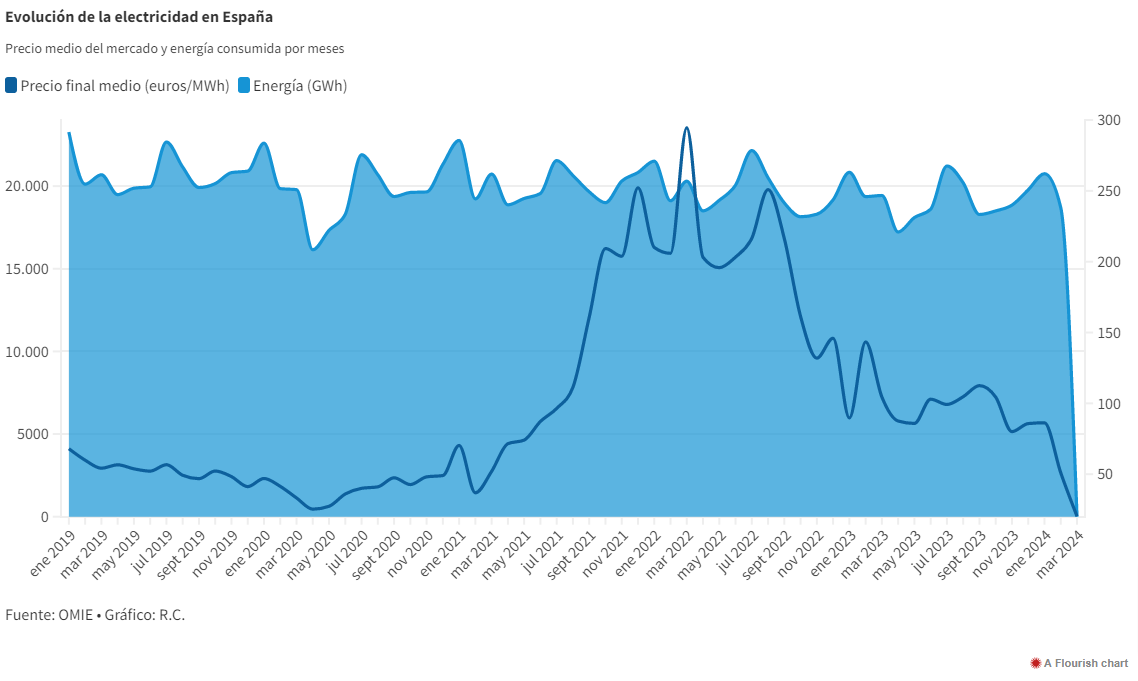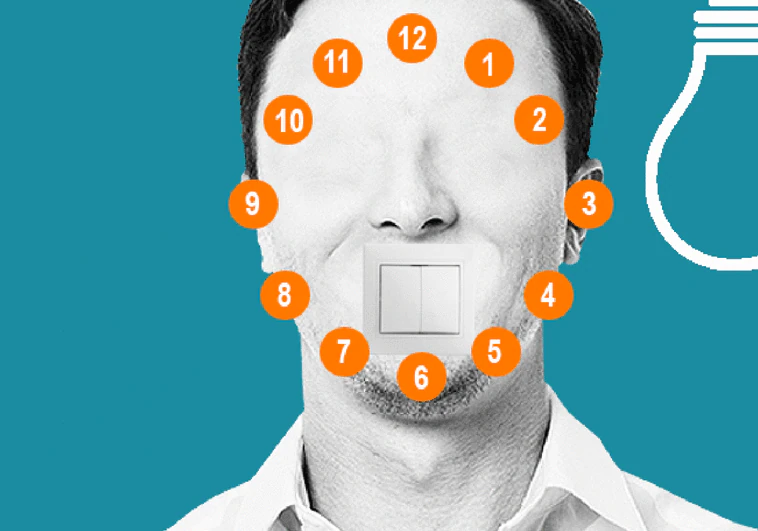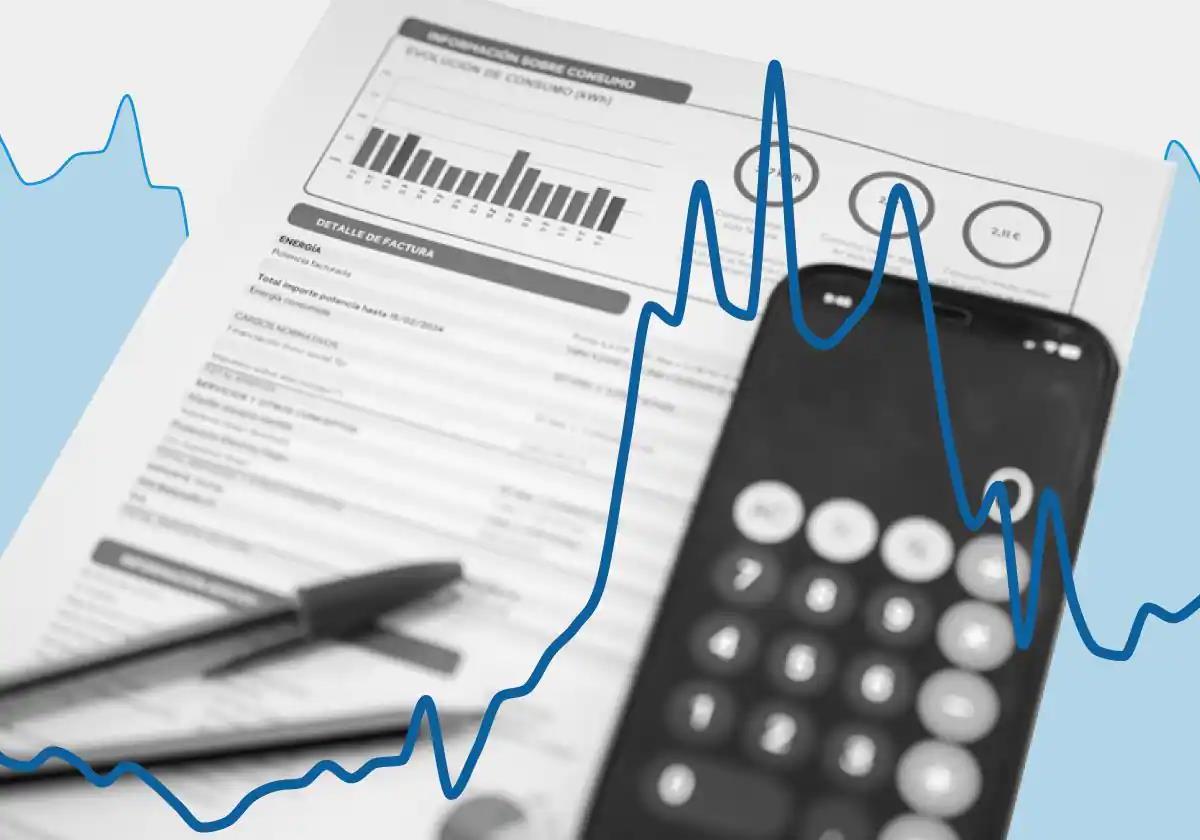Consumers in Spain take advantage of plummeting electricity prices after learning to turn off the lights to save money
Electricity consumption is still not picking up due to the rise in off-grid power, improved fuel efficiency in homes and the general slowdown in the industry
Just two summers ago, families in Spain were learning that, if they raised the temperature of their air conditioning by just one degree, their home electricity consumption would drop by 8%. Bars took it upon themselves to close their doors repeatedly to not lose heat or cold. Shopping centres agreed to turn off the lighting of their shop window displays at night. All these actions, which caused so much fracas and friction between the Spanish government and the opposition, are now causing electricity consumption to stand still. It is not taking off even with prices like those of recent weeks, at all-time lows and with stretches of the day in negative (supply to the grid being greater than the demand), as happened just this last week.
Related article
Today's electricity prices in Spain for regulated rate customers
Electricity demand (electricity consumption by the economy as a whole, from households to large industry) fell by 2.3% last year, the same proportion that had already fallen in 2022, in the midst of the energy crisis following the invasion of Ukraine. As of today, this consumption is still lower than that recorded in pre-pandemic Spain in 2019.

As a variable that has always been linked to economic growth, why aren't the lights no longer in sync with GDP?
For Antonio Delgado, CEO of Aleasoft, the fall in demand can be explained "by the increase in energy efficiency, partly due to advances in technology and individual will and partly forced down by the high prices" for electricity; also by "the increase in self-consumption" and by reduced industrial activity requiring energy. Despite this reality, there are already "the first signs of a possible gradual recovery", says Delgado, thanks to much more normalised tariffs.
Cautious consumers
Such was the insistence on saving electricity when prices were at their highest that all consumers in Spain passed the efficiency lesson with flying colours. Aelec (the association in Spain for electricity companies) points to this increase in efficiency as one major cause of lower consumption. "Consumers reacted to the crisis and became more cautious about when and how they used energy," says an Aelec spokesperson.
Electricity market
60%
is the percentage of electricity consumption coming from renewable plants so far this year.
Everything counts: adjusting the temperature on appliances; switching to 'eco' mode on household appliances; making the most use of electricity during cheap hours... and being more canny when contracting a suitable tariff.
When in the summer of 2022 the price per kilowatt-hour (kwh) reached peaks of over 0.40 euros and average monthly bills were well over 100 or 120 euros, many consumers decided to switch from the regulated market to one of the options offered by electricity companies in the free market.
It was then that Iberdrola's chairman Ignacio Galán reminded consumers how it was better to have a stable price than a PVPC (regulated prices) that was sky-rocketing at that time. In the last two years almost two million households have abandoned the regulated price market, moving away from tariffs varying by day and hour as they were sometimes paying double that of the best free market prices.
The best tariff now and in the future
But now, with electricity-generation prices at almost zero euros, the tables have been turned. The 8.5 million users of the PVPC tariff (3% of total consumers) benefit from an almost derisory cost of electricity, just four or five cents per kwh, when adding the fixed costs to the 0 euro generation price. However, those in the free market are now paying, at the very least, ten cents per kwh consumed.
What is the best option? Energy experts argue that now is the time to re-negotiate free-market contracts to put downward pressure on electricity companies.
There is also the option of going back to the regulated market, which is cheaper these days, although you run the risk of having to face paying for any unexpected spikes in electricity prices hitting your bank balance. Moreover, PVPC rates are steadily stabilising, like the free-market tariffs, due to the new price-fixing system specifically designed to avoid the ups and downs like those of two years ago.
Prices
49 euros
is the average amount for a regulated market electricity bill in Spain.
The installation of photovoltaic panels on the rooftops of many private homes has also changed the pattern of demand for electricity. A peak of 2.5 gigawatts (GW) was reached in 2022 with last year's installations amounting to 1.7 GW.
The president of UNEF (the key trade association for the photovoltaic industry in Spain) José Donoso recently stated that 2022 should be "considered as a peak year, due to its exceptional circumstances", a reference to the fact that high electricity prices prompted many households to install panels.
Consumption will improve with electrification
However, Alberto Martín Rivals as CEO of Neton Power points out that "demand is not falling that much" because "it's being measured after self-consumption", i.e. without taking into account that home-generated power is still being used up, so consumers in Spain are actually using more electricity than it would seem.
He adds that consumption has also decreased "due to efficiency measures, but with all the decarbonisation measures that are very much based on electrification, we will probably see an increase in electricity consumption" in two or three years.
The last variable that has influenced the fall in demand sits specifically with the largest consumers of electricity, the energy-intensive industries (chemical, petroleum and coal, paper and primary metals). Pedro González, director general of AEGE (the trade association for such industries), points out that "the price paid by industrialists in Spain is much higher than in other countries" due to the additional expenses allocated to their bills. He further flags that "companies go where they have a lower electricity bill for their production processes", which is why he asks the Spanish government for "real policies that bring us into line with neighbouring countries" in order to maintain similar prices and competitiveness.


